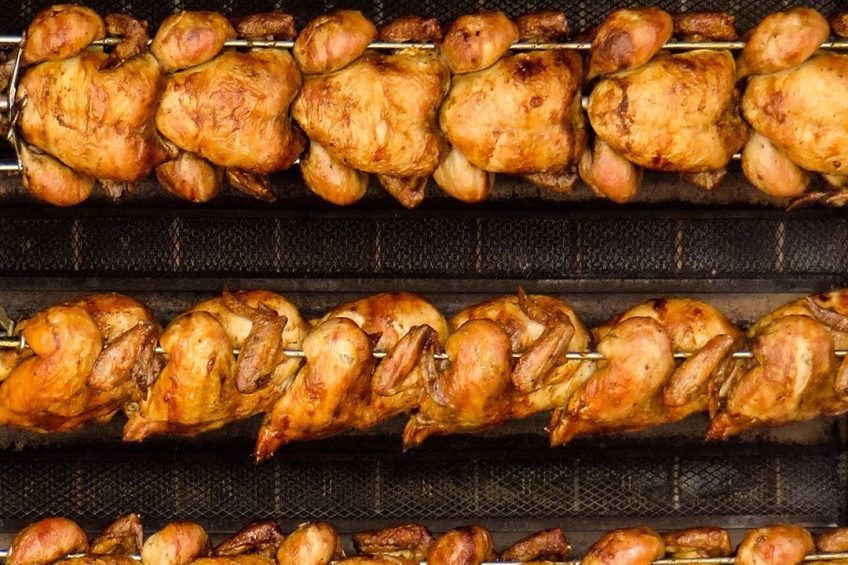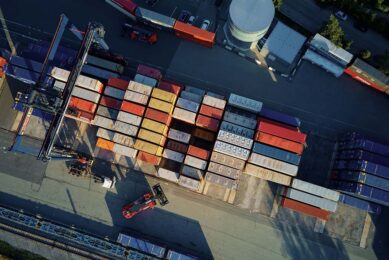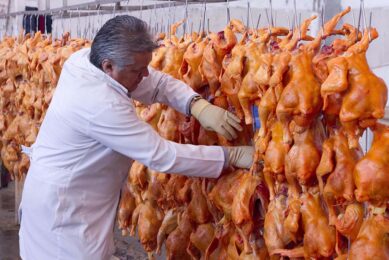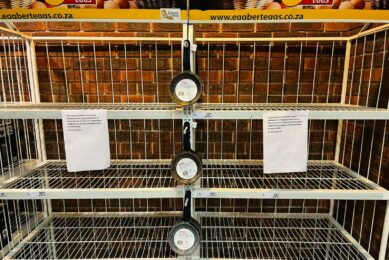Popularity of poultry continues globally

In 2019, the global poultry market increased by 6% to US$?231.5 billion, rising for the 3rd consecutive year. Global consumption peaked in 2019 and a continued upward consumption trend is expected, according to an IndexBox report.
With a combined 40% share of global consumption.
The countries with the highest volumes of poultry consumption in 2019 were:
- China (20 million tonnes),
- the US (19 million tonnes) and
- Brazil (12 million tonnes).
These countries were followed by:
- Russia,
- Mexico,
- India,
- Japan,
- Indonesia,
- Iran,
- South Africa,
- Malaysia and
- Myanmar,
Which together accounted for a further 21%.
The countries that recorded the highest levels of poultry per capita consumption in 2019 were:
- Malaysia (63 kg per person),
- the US (58 kg per person) and
- Brazil (57 kg per person).
The most notable rate of growth in terms of poultry per capita consumption, amongst the leading consuming countries, was Myanmar.
Global poultry forecast 2020-2030
According to the FAO, global poultry meat production is estimated to reach 137 million tonnes in 2020, with growth anticipated in China, the EU, Britain, Brazil and Mexico. New investments in processing capacity are expected to increase production in the EU and the UK, although the effects of Covid-19, as well as HPAI, are still to be determined.
Track Avian Influenza outbreaks
Poultry production is expected to increase in Brazil, South Africa and Mexico – in Brazil due to growing demand for imports (particularly from China), in South Africa due to strong consumer demand, and in Mexico because of competitive feed prices.
 Covid-19 Up-date
Covid-19 Up-date
What impact is the pandemic having on the global poultry sector and how are they dealing with it.
In contrast, poultry meat production is likely to decline in India and Thailand. In India, the outflow of labour from cities after the Covid-19 lockdown reduced the availability of workforce and led to a decrease in consumer demand. In Thailand, a sharp drop in demand for poultry meat from the food retail sector, including street food, is driving the expected decline in production. In the US, declining food sales and labour shortages have led the sector to abandon expansion plans. In addition, requirements for maintaining distances between workspaces in processing plants has reduced efficiency, resulting in a drop in production.
![]() Global poultry industry case studies
Global poultry industry case studies
Taking a deeper look into poultry production worldwide
Global poultry production
In 2019, the amount of poultry produced worldwide expanded to 130 million tonnes, up 3.7% from 2018. This growth is expected to continue. With a combined 45% share of global production.
The countries with the highest volumes of poultry production in 2019 were:
- The US (23 million tonnes),
- China (20 million tonnes) and
- Brazil (16 million tonnes).
Russia, India, Mexico, Indonesia, Turkey, Japan, Iran, Argentina, and Myanmar lagged somewhat behind, together comprising a further 20%. Russia experienced the most notable rate of growth in terms of poultry production amongst the key producing countries from 2009 to 2019.
Global poultry trade
For the 4th year in a row, the global market recorded growth in overseas shipments of poultry, which increased 2.2% to 17 million tonnes in 2019. The total export volume increased at an average annual rate of 3.3% over the period from 2009 to 2019.
Exports by country
The main poultry exporters in 2019 were Brazil (4 million tonnes) and the US (3.6 million tonnes) – approx. 24% and 22% of total exports, respectively. The Netherlands (1.5 million tonnes) and Poland (1.5 million tonnes) followed, together generating an 18% share of total exports. Behind was Belgium (509,000 tonnes), Turkey (493,000 tonnes) and Germany (473,000 tonnes). In value terms, the largest poultry supplying countries worldwide were Brazil (US$ 6.5 billion), the US (US$ 3.7 billion), and Poland (US$ 2.9 billion), with a combined 48% share of global exports.
Export prices of poultry
The average poultry export price was US$ 1,644 per tonne in 2019, remaining relatively unchanged against 2018. In general, the export price, however, continues to indicate a relatively flat trend pattern. There were significant differences in the average prices amongst the major exporting countries. In 2019, the country with the highest price was Thailand ($ 2,683 per tonne), while the US ($ 1,045 per tonne) was amongst the lowest.
 Beheer
Beheer








 WP Admin
WP Admin  Bewerk bericht
Bewerk bericht